#AgScience
Explore tagged Tumblr posts
Text

Inside the Future of Farming: Our Plant Research Facility
At the cutting edge of agricultural innovation, our Plant Research Facility is where science meets sustainability. From climate-resilient crops to smart soil analysis, we're responsibly unlocking plant growth secrets to feed the world. 🌎💧
👩🔬 What we do: ✅ Develop high-yield, drought-tolerant plant varieties ✅ Research plant genetics and microbiomes ✅ Collaborate with universities, farmers & biotech firms ✅ Advanced vertical farming and precision agriculture
📍Visit us or follow our journey as we grow the future—one leaf at a time
For more information, visit: https://bit.ly/3S2zK98 Contact us on: +91 77790 21916
#PlantResearch#AgTech#SustainableFarming#PlantScience#CropInnovation#VerticalFarming#SmartAgriculture#AgriTech#SoilHealth#GreenTech#FutureFarming#UrbanFarming#Biotech#ClimateResilience#EcoFarming#PrecisionAgriculture#Hydroponics#PlantGenetics#FoodSecurity#AgriculturalResearch#AgScience#CleanFarming#EnvironmentalScience#GreenRevolution#FarmTech#Botany#Agroecology#SmartFarming#NextGenFarming#AgriInnovation
0 notes
Photo

Increasing my knowledge about plant nutrients and deficiencies! So fascinating when the topics you study can actually be finally put into practice as I prepare to start my own garden area and veggies patches in the coming weeks! It's a little something that I look forward to that makes all the hard work worth it, and even better that I get to share that with my amazing boyfriend who's going to help me!! #gardening #veggiegarden #gardeninglife #uni #notestagram #studytips #studytips101 #gardeningideas #plants #plantnutrition #plantscience #agscience (at Tasmania)
#gardening#veggiegarden#gardeninglife#uni#notestagram#studytips#studytips101#gardeningideas#plants#plantnutrition#plantscience#agscience
9 notes
·
View notes
Photo
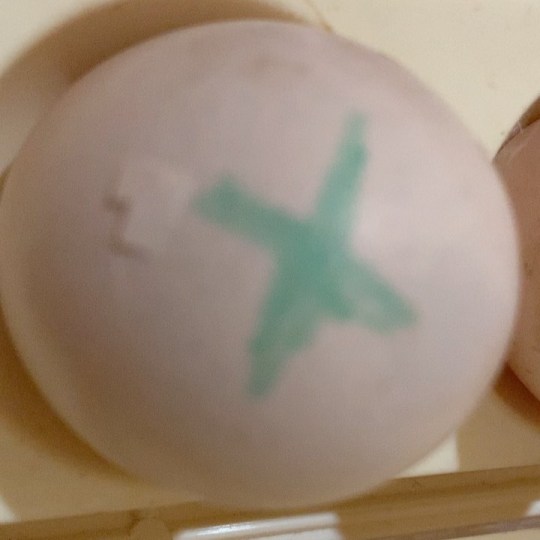
We can hear peeps from this egg. It’s been moved to another incubator without the rack anticipating another Silkie chick hatching today. #silkiechicks #silkiesofinstagram #incubators #babychicks #babychickshatching #embryology #science #agscience #farmlife #homeschool #homeschoolscience #homestead #homesteadhomeschool #farmhomeschool #4h #4hgrowshere #farmfieldtrip #virtuallearning #virtualteaching #virtualclasses #creation #animals (at Morning Glory Homestead) https://www.instagram.com/p/CI1F4jOh19x/?igshid=1wnnu6h5n04oa
#silkiechicks#silkiesofinstagram#incubators#babychicks#babychickshatching#embryology#science#agscience#farmlife#homeschool#homeschoolscience#homestead#homesteadhomeschool#farmhomeschool#4h#4hgrowshere#farmfieldtrip#virtuallearning#virtualteaching#virtualclasses#creation#animals
0 notes
Photo
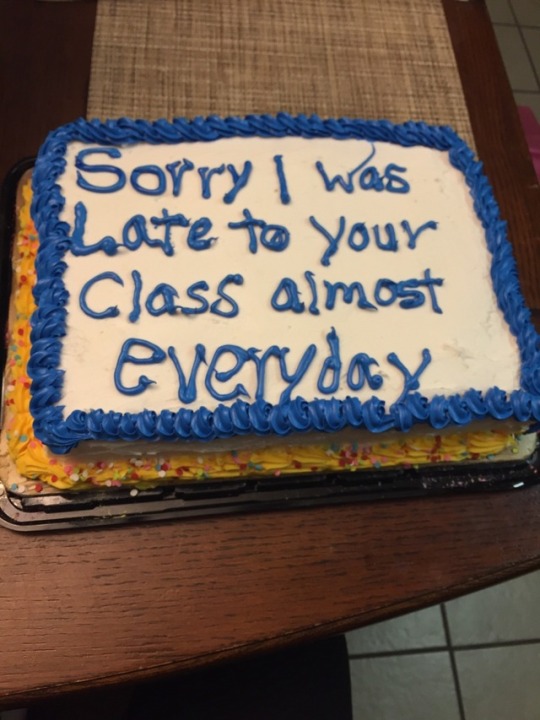
What I made my agriculture teacher. 😂 Cakeboss who? 🎂😂
4 notes
·
View notes
Video
instagram
THIS WAS MY FIRST TIME FINDING A NORTHERN RED SALAMANDER AND I'M SO EXCITED! JUST LOOK AT THIS GUY! You shoulda seen my face when I turned over a rock and there he was! They're actually pretty common across PA I guess I just wasn't looking in the right spot! ○ ○ ○ • ○ • ● ○ ● • ● • ● ○ #pennstate #wanderlust #travel #adventure #adventurer #keepthestoke #keepexploring #liveBOLD #liveBANGS #exploremore #explore #college #collegelife #wildlife #fisheries #science #coolscience #fieldwork #salamander #psu #agscience #thinkag #redsalamander #summer #stem #nature #neature #field #LIVESIMPLE #natural #naturalhistory (at Bald Eagle State Park)
#stem#agscience#fisheries#livesimple#nature#adventurer#coolscience#college#keepexploring#neature#collegelife#psu#naturalhistory#redsalamander#fieldwork#salamander#natural#science#livebold#travel#keepthestoke#exploremore#pennstate#wanderlust#livebangs#explore#adventure#summer#field#wildlife
1 note
·
View note
Text
in my animal science/agscience classroom there’s a model of a dog skeleton in a glass case with a sticky note on the glass that says “dog” and another sticky note before that one that says “former” funniest shit i’ve ever seen
2 notes
·
View notes
Text
Crop rotation For Soil healthcare with Bhumi Prayogshala
A centuries-in length procedure that local establishments have used to expand their crops' production and make sure that their soil yields to what their population needs. Crop rotation techniques would vary on the societies and their demands. A few procedures, for instance, would be done to accomplish quick outcomes without significance to keep utilizing assets; other product pivot designs would be made for longer timeframes for continuous crop production while protecting the resources used.
Keeping the soil's helpfulness through crop rotation maintains its functions without stripping it of its nutrients. Like this, crop rotation has maintained its convenience throughout the centuries, becoming both a timeless and innovative way of generate a steady food supply. And with the harvest you helped to produce through these techniques, you’re ensuring good soil health and a constant crop growth no matter the season.
Mostly, crop rotation works to make sure proper nutrients are available for plant growth and soil functions. It keeps your soil healthy and fertile, so plants can grow and produce big harvests year after year by changing the crops planted in each plot into the next season. It also helps to manage possible diseases and pests related to certain plant families and thus protect the crops from harm, by moving them to a different area.
In turn to get better your farm’s well-being and your soil’s production, here we give you some fundamental crop rotation techniques to plan for your next harvest season:
In the first place, partition your harvests into four fundamental classes: legumes, roots, fruits, and leaves. You can start sectioning your farm into four different areas, or beds where you will consecutively plant your crops and switch with each change of season.
Regardless of whether your homestead is little or doesn't have enough space for giving distinctive soil beds, separate the crops into the above-mentioned plant groups instead of giving separate beds for each species of plant. Though planting this way, might make it harder to stop the spread of diseases and pests between your crops, you will have to keep a closer eye on their growth in between rotations.
To begin the rotation, start with more nitrogen-inducing crops like legumes for added soil nutrients, followed by leaf or fruit crops in that now nitrogen infused area since they need it as a nutrient, then move in with the root crops. This type of planning can be good for small farms as a simple crop rotation system.
If you have a larger farm, it’s best to plan your crop rotation on plant families instead of on nutrient needs. This will help prevent diseases and pests from attacking the following crops that are planted in the same area that a previous crop attracted.
Some diseases that are left behind, though, will require longer crop rotations for them not to affect the following crop. So long-term crop rotation planning will be required to wait for the disease to leave the soil bed before it is used again.
Cover crops can protect your crops from certain types of pests and improve the soil quality at the same time. It reduces the pests that might affect the following crops, allowing them to grow while adding soil organic matter content, improving the soil's duration.
If there is a certain crop group that you don't normally plant or use much of, the area left behind, if you follow the plant group rotation, is called a fallow bed. The fallow bed can be left empty for the soil to replenish itself and rest. You can also plant cover crops for fallow beds to help improve the soil’s fertility and its drainage capabilities.
With this in mind, Techno Surge Industries LLP has extend its wings and licensed the technical experience for the PUSA Soil Test Fertilizer Recommendation Meter (STFR) Kit from the INDIAN AGRICULTURAL RESEARCH INSTITUTE (IARI), New Delhi and INDIAN COUNCIL OF AGRICULTURAL RESEARCH (ICAR), New Delhi.
Smart Soil Testing Labs
Soil Testing is changing the way our agricultural industry looks at nutrient availability within the specific soil types that define each unique cropping system.
0 notes
Photo
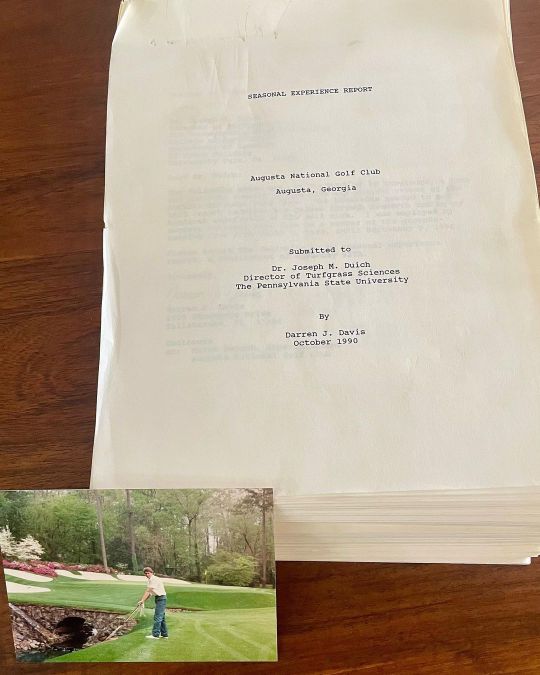
When the legendary #PennState @agsciences #Turfgrass Professor Dr. Duich vacated his office he saved and later sent me my #AugustaNational seasonal experience report Day 1 of @themasters seemed like a perfect time to read the 285 pages prepared on a typewriter with photos glued to the yellowing pages @GCSAA #Atraditionunlikeanyother #greatmemories #golfcoursesuperintendent #somepeoplegettocallthiswork https://www.instagram.com/p/CcEZid3s0jD/?utm_medium=tumblr
#pennstate#turfgrass#augustanational#atraditionunlikeanyother#greatmemories#golfcoursesuperintendent#somepeoplegettocallthiswork
0 notes
Photo

T-minus 1 hr 45 min until Ask a #Veterinarian on @WPSU. We'll have Dr. Fred Metzger of Metzger Animal Hospital, Dr. Andrea Loar of CPVETS and Dr. Hayley Springer of @agsciences! Call 1-800-543-8242, email [email protected] to ask questions! (at WPSU) https://www.instagram.com/p/By8rhFpHXKs/?igshid=klocfct0e5pj
0 notes
Photo
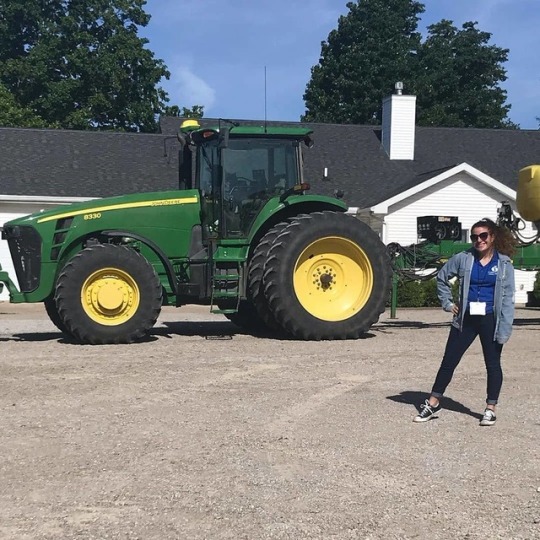
Last Friday, I went to a local farm and learned about how to incorporate agriculture into the science and technology curriculum that I will teach in the near future. Here is a picture of me with the HUGE tractor used on this farm! First farm visit = ✔️🐄👩🏼🌾 (#latergram) #agscience #agricultureeducation Reposted from @miss.pico http://bit.ly/2IVbuRT
0 notes
Photo
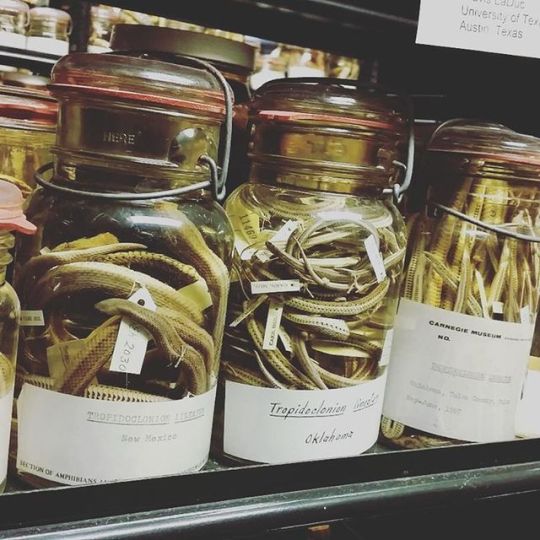
Some more snapshots from our trip to CMNH! ○ ° • ° ○ ° ● ° ○ ° ● ° ○ ° ● #liveBANGS #liveBOLD #LIVESIMPLE #pennstate #wanderlust #travel #adventure #adventurer #keepthestoke #keepexploring #exploremore #explore #college #collegelife #wildlife #fisheries #fieldwork #museum #snake #collection #nature #neature #psu #agscience #carnegie #science #coolscience (at Carnegie Museum of Natural History)
#psu#agscience#college#snake#wanderlust#adventurer#pennstate#fieldwork#collegelife#neature#science#carnegie#adventure#keepexploring#explore#coolscience#collection#nature#keepthestoke#livebold#livebangs#wildlife#fisheries#museum#livesimple#travel#exploremore
1 note
·
View note
Photo
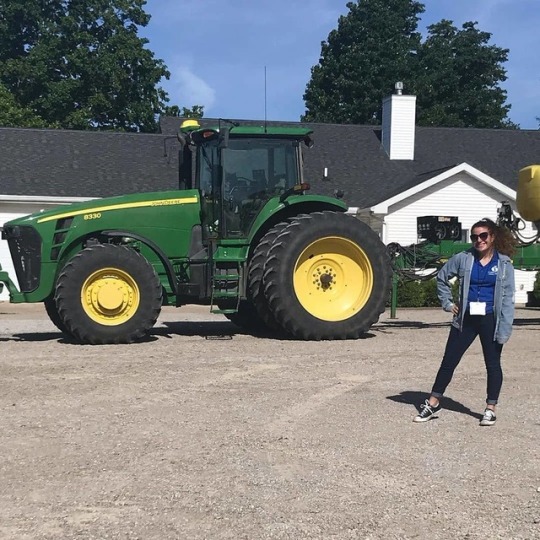
Last Friday, I went to a local farm and learned about how to incorporate agriculture into the science and technology curriculum that I will teach in the near future. Here is a picture of me with the HUGE tractor used on this farm! First farm visit = ✔️🐄👩🏼🌾 (#latergram) #agscience #agricultureeducation Reposted from @miss.pico http://bit.ly/2IVbuRT
0 notes
Text
Expert-approved ways to feed all your favorite birds
A ruby-throated hummingbird dips into a nectar feeder. An East Coast favorite, the species can be harmed by yard predators like praying mantises and bacteria in unclean equipment. (Jeremy Lwanga/Unsplash/)
Julian Avery is an assistant research professor of wildlife ecology and conservation at Pennsylvania State University. This story originally featured on The Conversation.
Millions of Americans enjoy feeding and watching backyard birds. Many people make a point of putting food out in winter, when birds needs extra energy, and spring, when many species build nests and raise young.
As a wildlife ecologist and a birder, I know it’s important to understand how humans influence bird populations, whether feeding poses risks to wild birds, and how to engage with birds in sustainable ways.
There’s still much to learn about the risks and benefits of feeding birds, particularly through large integrated national citizen science networks like Project FeederWatch. But we now have enough information to promote healthy interactions that can inspire future generations to care about conservation.
View this post on Instagram
Look at this #beauty .... I spent some time watching #birds while out in the field yesterday and it dawned on me how cool #whitebreastednuthatch feet are! Their monstrous #toes allow them to orient in any direction they want to when clinging to a tree. Their bill is an impressive #tool too, they hammer open seeds and will even widen nest cavities with it! 💪🏼#beastmode • • • • #getoutside #exploreeverything #biodiversity #boss #beast #birdfeeder #birdwatching #birdphotography #kings_birds #nuts_about_birds #audubon @canonusa #teamcanon #birding #sunflower #musclemilk #muscle #nature_sultans #wildlife #feederwatch @shaverscreek @agsciences #birdseed @audubonsociety
A post shared by Julian Avery (@evolutionavery) on Feb 19, 2020 at 12:18pm PST
A long-term relationship
Birds have been taking advantage of human civilization for thousands of years, congregating where grains and waste are abundant. This means that people have been influencing the abundance and distribution of species for a very long time.
Studies show that providing food has myriad effects on birds’ decisions, behaviors, and reproduction. One significant finding is that winter bird feeding increases individual survival rates, can encourage birds to lay eggs earlier in the year, and can also improve nestling survival.
All of these factors alter species’ future reproductive performance and can increase total bird abundance in later years. It’s not always clear how increased abundance of feeder birds impacts other species through competition, but rarer and smaller species can be excluded.
This interactive diagram, based on community science data, shows how North America’s top 13 feeder species fare when they compete at feeders. Credit: Cornell Lab of Ornithology
Supplemental food has also led to reduced reproductive success in a few species. This may happen because it improves survival odds for less healthy birds that otherwise would be unlikely to survive and reproduce, or because it leads birds to eat fewer types of natural foods, making their diets less nourishing.
Changing bird behavior
Research also shows that birds are extremely promiscuous. One review examined 342 species and found that in approximately 75 percent, birds had one or more side partners in addition to their nest mate.
It’s not always clear why birds cheat, but several studies have found that supplemental feeding can reduce the amount of infidelity in certain species, including house sparrows. This hints that feeding birds might alter their behavior and have an effect on genetic variation in urban populations.
For birds that provide pollinating services, like hummingbirds and lorikeets, there is some evidence that providing them with sugar water—which mimics the nectar they collect from plants—can reduce their visits to native plants. This means they will transfer less pollen. Since much bird feeding happens in densely populated urban areas, it’s unclear how much impact this might have.
Some bird populations depend completely on feeding and would collapse over the winter without it. For example, Anna’s hummingbirds in British Columbia rely on heated feeders. Other species, such as hummingbirds in the southwest US, have become more locally abundant. Northern cardinals and American goldfinches have shifted and expanded their ranges northward with the availability of food.
In one incredible instance, garden feeders seem to have played a role in establishing a new wintering population of migratory blackcaps in the UK. This group is now genetically distinct from the rest of the population, which migrates further south to Mediterranean wintering grounds.
Don’t feed the predators
Scientists still know little about how bird feeding affects transmission of pathogens and parasites among birds. It is not uncommon for birds at feeders to carry more pathogens than populations away from feeders. Some well-documented outbreaks in the US and UK have shown that feeding birds can increase problems associated with disease—evidence that was collected through feeder-watch citizen science projects.
Because we still have a poor understanding of pathogen transmission and prevalence in urban areas, it’s extremely important to follow hygiene guidelines for feeding and be alert for new recommendations.
Feeding can also attract predators. Domestic cats kill an estimated 1.3 to 4 billion birds in the US every year. Feeders should not be placed in settings where cats are present, and pet cats should be kept indoors.
Feeders can also support both native and introduced birds that outcompete local species. One study found that feeders attracted high numbers of crows, which prey on other birds’ chicks, with the result that less than 1 percent of nearby American robin nests fledged young. In New Zealand, bird feeding largely benefits seed-eating introduced species at the expense of native birds.
Clean feeders and diverse diets
The good news is that studies don’t show birds becoming dependent on supplemental food. Once started, though, it is important to maintain a steady food supply during harsh weather.
Birds also need access to native plants, which provide them with habitat, food, and insect prey that can both supplement diets and support species that don’t eat seeds at feeders. Diverse food resources can counteract some of the negative findings I’ve mentioned related to competition between species and impacts on bird diets.
Good maintenance, placement and cleaning can help minimize the likelihood of promoting pathogens at feeders. Initiatives like Project FeederWatch have recommendations about feeder design and practices to avoid. For example, platform feeders, where birds wade through the food, are associated with higher mortality, possibly through mixing of waste and food.
It’s also important to manage the area around feeders. Be sure to place feeders in ways that minimize the likelihood that birds will fly into windows. For instance, avoid providing a sight line through a house, which birds may perceive as a corridor, and break up window reflections with decals.
There are lots of great reasons to bring birds into your life. Evidence is growing that interacting with nature is good for our mental health and builds public support for conserving plants and wildlife. In my view, these benefits outweigh many of the potential negatives of bird feeding. And if you get involved in a citizen science project, you can help scientists track the health and behavior of your wild guests.
0 notes
Text
Expert-approved ways to feed all your favorite birds
A ruby-throated hummingbird dips into a nectar feeder. An East Coast favorite, the species can be harmed by yard predators like praying mantises and bacteria in unclean equipment. (Jeremy Lwanga/Unsplash/)
Julian Avery is an assistant research professor of wildlife ecology and conservation at Pennsylvania State University. This story originally featured on The Conversation.
Millions of Americans enjoy feeding and watching backyard birds. Many people make a point of putting food out in winter, when birds needs extra energy, and spring, when many species build nests and raise young.
As a wildlife ecologist and a birder, I know it’s important to understand how humans influence bird populations, whether feeding poses risks to wild birds, and how to engage with birds in sustainable ways.
There’s still much to learn about the risks and benefits of feeding birds, particularly through large integrated national citizen science networks like Project FeederWatch. But we now have enough information to promote healthy interactions that can inspire future generations to care about conservation.
View this post on Instagram
Look at this #beauty .... I spent some time watching #birds while out in the field yesterday and it dawned on me how cool #whitebreastednuthatch feet are! Their monstrous #toes allow them to orient in any direction they want to when clinging to a tree. Their bill is an impressive #tool too, they hammer open seeds and will even widen nest cavities with it! 💪🏼#beastmode • • • • #getoutside #exploreeverything #biodiversity #boss #beast #birdfeeder #birdwatching #birdphotography #kings_birds #nuts_about_birds #audubon @canonusa #teamcanon #birding #sunflower #musclemilk #muscle #nature_sultans #wildlife #feederwatch @shaverscreek @agsciences #birdseed @audubonsociety
A post shared by Julian Avery (@evolutionavery) on Feb 19, 2020 at 12:18pm PST
A long-term relationship
Birds have been taking advantage of human civilization for thousands of years, congregating where grains and waste are abundant. This means that people have been influencing the abundance and distribution of species for a very long time.
Studies show that providing food has myriad effects on birds’ decisions, behaviors, and reproduction. One significant finding is that winter bird feeding increases individual survival rates, can encourage birds to lay eggs earlier in the year, and can also improve nestling survival.
All of these factors alter species’ future reproductive performance and can increase total bird abundance in later years. It’s not always clear how increased abundance of feeder birds impacts other species through competition, but rarer and smaller species can be excluded.
This interactive diagram, based on community science data, shows how North America’s top 13 feeder species fare when they compete at feeders. Credit: Cornell Lab of Ornithology
Supplemental food has also led to reduced reproductive success in a few species. This may happen because it improves survival odds for less healthy birds that otherwise would be unlikely to survive and reproduce, or because it leads birds to eat fewer types of natural foods, making their diets less nourishing.
Changing bird behavior
Research also shows that birds are extremely promiscuous. One review examined 342 species and found that in approximately 75 percent, birds had one or more side partners in addition to their nest mate.
It’s not always clear why birds cheat, but several studies have found that supplemental feeding can reduce the amount of infidelity in certain species, including house sparrows. This hints that feeding birds might alter their behavior and have an effect on genetic variation in urban populations.
For birds that provide pollinating services, like hummingbirds and lorikeets, there is some evidence that providing them with sugar water—which mimics the nectar they collect from plants—can reduce their visits to native plants. This means they will transfer less pollen. Since much bird feeding happens in densely populated urban areas, it’s unclear how much impact this might have.
Some bird populations depend completely on feeding and would collapse over the winter without it. For example, Anna’s hummingbirds in British Columbia rely on heated feeders. Other species, such as hummingbirds in the southwest US, have become more locally abundant. Northern cardinals and American goldfinches have shifted and expanded their ranges northward with the availability of food.
In one incredible instance, garden feeders seem to have played a role in establishing a new wintering population of migratory blackcaps in the UK. This group is now genetically distinct from the rest of the population, which migrates further south to Mediterranean wintering grounds.
Don’t feed the predators
Scientists still know little about how bird feeding affects transmission of pathogens and parasites among birds. It is not uncommon for birds at feeders to carry more pathogens than populations away from feeders. Some well-documented outbreaks in the US and UK have shown that feeding birds can increase problems associated with disease—evidence that was collected through feeder-watch citizen science projects.
Because we still have a poor understanding of pathogen transmission and prevalence in urban areas, it’s extremely important to follow hygiene guidelines for feeding and be alert for new recommendations.
Feeding can also attract predators. Domestic cats kill an estimated 1.3 to 4 billion birds in the US every year. Feeders should not be placed in settings where cats are present, and pet cats should be kept indoors.
Feeders can also support both native and introduced birds that outcompete local species. One study found that feeders attracted high numbers of crows, which prey on other birds’ chicks, with the result that less than 1 percent of nearby American robin nests fledged young. In New Zealand, bird feeding largely benefits seed-eating introduced species at the expense of native birds.
Clean feeders and diverse diets
The good news is that studies don’t show birds becoming dependent on supplemental food. Once started, though, it is important to maintain a steady food supply during harsh weather.
Birds also need access to native plants, which provide them with habitat, food, and insect prey that can both supplement diets and support species that don’t eat seeds at feeders. Diverse food resources can counteract some of the negative findings I’ve mentioned related to competition between species and impacts on bird diets.
Good maintenance, placement and cleaning can help minimize the likelihood of promoting pathogens at feeders. Initiatives like Project FeederWatch have recommendations about feeder design and practices to avoid. For example, platform feeders, where birds wade through the food, are associated with higher mortality, possibly through mixing of waste and food.
It’s also important to manage the area around feeders. Be sure to place feeders in ways that minimize the likelihood that birds will fly into windows. For instance, avoid providing a sight line through a house, which birds may perceive as a corridor, and break up window reflections with decals.
There are lots of great reasons to bring birds into your life. Evidence is growing that interacting with nature is good for our mental health and builds public support for conserving plants and wildlife. In my view, these benefits outweigh many of the potential negatives of bird feeding. And if you get involved in a citizen science project, you can help scientists track the health and behavior of your wild guests.
0 notes
Text
Great work by @RickSteves and @bread4theworld on the importance of nutrition to prevent stunting focused on Ethiopia and Guatemala where we work #foodsecurity #increaseincomes #improvenutrition #NormanBorlaug #agscience #agvocate #endhunger #feedtheworldhttps://t.co/5tHW6CPP7i
— Borlaug Institute (@BorlaugTAMU) February 21, 2020
0 notes
Text
Weekly Update - Monday, January 14, 2019
Promise - Passion - Perseverance
“Darkness cannot drive out darkness; only light can do that.
Hate cannot drive out hate; only love can do that.”
Martin Luther King, Jr.
Good Morning,
I know many of you have been wondering what I have been thinking about the weather. Well, it appears we dodged another winter weather event. I am sure we will get something over the course of the winter, but the longer we go with no snow days the better.
I do want to thank Public Works for their proactive approach this past week. They were out at 3 am treating roads which enabled us to have an on-time start. Their collaboration has been incredible!
On Friday evening, I had the pleasure of attending the performance of Peter Pan Jr. at Sheehan High School. What an amazing display of talent! From singing to dancing, these students did a phenomenal job. The creativity of the staging of the show was also incredible. Thank you to all of the students and staff for their hard work. I left there feeling so proud. I can only imagine how the parents and grandparents felt.
Next Monday, we celebrate Martin Luther King, Jr. Day with the annual ceremony at Town Hall. This event, which starts at 10 am, is very moving. This year, the readings and musical performances will be provided by Sheehan High School students. Like last year’s contributions by Lyman Hall students, I know it will be a wonderful tribute to the life of this amazing man. If you happen to be able to attend the ceremony, I would encourage you to do so.
Budget Meeting Reminder
Tonight is the initial budget presentation. It is scheduled for 6 pm at the Lyman Hall High School AgScience Community Room. I will share the presentation with all staff tomorrow morning. I will also include a brief survey for everyone to complete. I really appreciate your input. Again, I need to stress, like the facility study, this is a long process. If you have any questions, please feel free to contact me.
Promise - Passion - Perseverance
On Thursday evening, I was inspired by the performances at the Unified Theater presentation at Lyman Hall High School. Unified Theater brings together special education and general education students to express their creativity and talent. Each year this show becomes more and more special. Personally, I was moved by the the first song they performed - This is Me - from the movie The Greatest Showman. The song lyrics are so fitting.
I am not a stranger to the dark
Hide away, they say
'Cause we don't want your broken parts
I've learned to be ashamed of all my scars
Run away, they say
No one'll love you as you are
But I won't let them break me down to dust
I know that there's a place for us
For we are glorious
When the sharpest words wanna cut me down
I'm gonna send a flood, gonna drown them out
I am brave, I am bruised
I am who I'm meant to be, this is me
Look out 'cause here I come
And I'm marching on to the beat I drum
I'm not scared to be seen
I make no apologies, this is me.
Benj Pasek and Justin Paul
I want to thank all of the students and staff for a heartwarming event. Everyone left Lyman Hall High School emotionally charged and positive. Tapping into the promise, passion, and perseverance of this group of students was inspirational!
Make it a great week!
Sal
Dr. Salvatore F. Menzo
Superintendent
Email - [email protected]
Twitter - @SalMenzo
Wallingford Public School District
Wallingford Public School System Mission
To inspire through innovative and engaging experiences that lead all learners to pursue and discover their personal best.
THE INFORMATION IN THIS TRANSMISSION IS PRIVILEGED AND CONFIDENTIAL AND INTENDED ONLY FOR THE RECIPIENT LISTED ABOVE. If you have received this transmission in error, please NOTIFY ME IMMEDIATELY BY E-MAIL AND DELETE THE ORIGINAL MESSAGE. Responses provided by this E-Mail are SIMILAR to ordinary telephone or face-to-face conversations.
0 notes